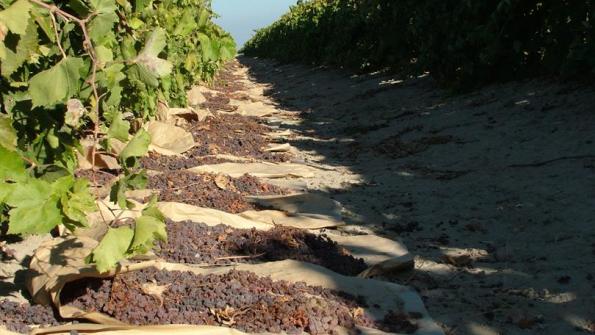
As reported in the March 27 issue of The Grapeline, this past winter researchers based at the University of California and Sacramento State University surveyed six groups of grape growers in various regions of the state as part of a project to develop techniques for earlier detection of grape vine canker diseases. That, in turn, could lead to more effective, longer-term control.
Also known as trunk diseases, they include Botryosphaeria dieback (Bot canker), Esca, Eutypa dieback and Phomopsis dieback. Many of California’s vineyards are believed to be infected with these diseases. Typically, symptoms aren’t apparent until vines are about seven to eight years old. That may be several years after the vines were infected. In the meantime, they’ve begun a slow, steady decline in yields and quality. In severe cases, yield losses can exceed 90 percent, researchers report.
Led by plant pathologist Kendra Baumgartner, with the USDA’s Agricultural Research Service, a team of researcher want to develop a simple, quick way for growers to detect canker diseases on vines as young as, perhaps, three years. That would give growers more time to control these diseases before they become established. This should help them extend the productive life of a vineyard much longer than is possible now, say the researchers.
The researchers asked growers if they used either of several treatments known to prevent grape vine canker diseases from spreading. Depending on the group, the proportion of growers applying these treatments ranged from as few as 25 percent to as many as 80 percent.
Recently, the researchers released results of the findings from their survey of 67 grape growers in the southern San Joaquin Valley, mostly Fresno County raisin growers. The survey focused on two types of trunk disease treatments: Delaying pruning until late in the dormant season and painting pruning wounds with a chemical protectant immediately after pruning.
Between 50 percent and 60 percent of these growers reported never or rarely using these practices in the past five years. In the same period, less than 20 percent reported always using them.
When asked the typical age of a vineyard when they first started using delayed pruning and pruning-wound protectants, about 40 percent of growers reported usually starting when the vineyards were older than 13 years. “A sizeable minority of growers likely start to use the preventive practices after infection has already occurred,” the researchers report.
Often, vines don’t shown signs of the diseases until they are eight years or older, the researcher note, even when infection occurs much earlier. Among these growers, roughly 20 percent start delayed pruning when the vineyards are between 4 and 7 years old. A little under 30 percent begin applying pruning-wound protectants to vines at that age.
In terms of how well each practice maintained adequate yields or how cost-effective it was, growers rated both delayed pruning and pruning-wound protectants as mildly effective, the researcher notes. At the same time, they rated pruning-wound protectants slightly more positive than delayed pruning.
These findings are described in more detail in the Research Brief, Trunk Disease Survey in Fresno: Preliminary Results, published by the Center for Environmental Policy and Behavior at the University of California, Davis.
About the Author(s)
You May Also Like




